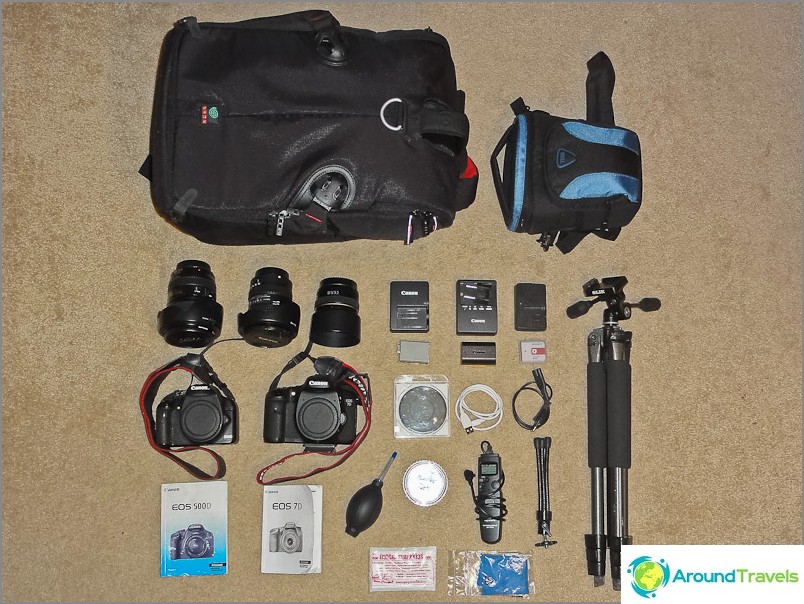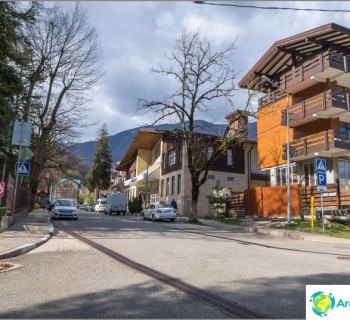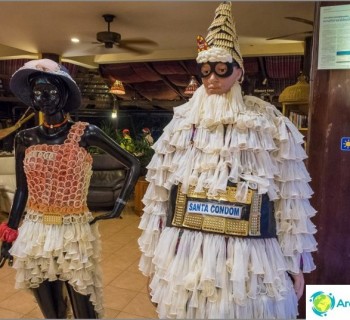Having received another letter asking what kind of camera I use, I decided to write a small post on this topic so as not to repeat myself. I am not a professional photographer and do not pretend to be one. The experience of communicating with the camera is still calculated for several years. I did not go to various courses (although the desire periodically arises), I have not read smart books, so everything that is written here, the opinion of a teapot, keep in mind 🙂
The content of the article
- one List of my techniques so far
- 2 Past kits (all sold)
- 3 Principles of travel photography and in general
- 4 Photo processing
- five Photo storage
List of my techniques so far
I decided to update and rewrite a little post about my camera equipment, as its composition has changed quite a lot. An almost complete upgrade was made and now, I hope, for the next few years nothing else will be needed..
Progress does not stand still and I switched to mirrorless a couple of years ago. First, it was a Sony a6000 camera (crop 1.5) with one single Sony 18-105 f4 lens. This set is more compact and lighter in weight than my previous set Canon 7D + Canon 24-105 times 2. Probably, when you do not make money directly from photographs (weddings, photo sessions, etc.), then after a while you want compactness, and so that you do not need I had to carry a whole photo backpack with me every time. Read my post Which camera to choose for a novice photographer.
After 2 years of using a Sony mirrorless camera, it already seemed to me too big with an 18-105 lens: you can't put it in your pocket, but it also takes up a decent place in a city backpack. Nevertheless, after a couple of years I changed the Sony a6000 to a Sony a6500, the lens remained the same. This is a new model, but in the same line, where they made the touchscreen and added a stabilizer built into the carcass.
I also bought a Canon G7x mark 2. Initially, I took it for video selfies (I tried to shoot video), but in terms of travel blogging, it showed itself quite well. Built-in stub, touchscreen, quite comfortable focal lengths (24-105) for a non-interchangeable lens, and very compact! I traveled with her for 2 months in Thailand and she was with me every minute, was in my pocket. To be honest, I'm not sure if I will take Sony with me so often now. Of course, Sonya shoots much better, focus is faster, in the dark and working up to 3200 compared to 800 for Kenon, but compactness is everything.
Also recently I started taking photos with my phone. Tell me this at the beginning of blogging, I wouldn't believe it. But modern smartphones (I have a Galaxy S7) take pretty good photos under good shooting conditions, especially if this is not an artistic photo, but documenting a moment, an inscription, a store, a menu in a cafe, etc., that is, what is often needed travel info bloggers.
Past kits (all sold)
- DSLRs Canon 7d and Canon 500d.
- Sony HX5V soap dish, was bought sometime for shooting HD video.
- Lenses, 3 pieces: Canon EF 50 f1.4 portrait lens, Canon 24-105L staff and Tokina 11-16 f2.8 shirik
- Photo bag for a carcass and a photo backpack KATA 3N1-33.
- Tripod big and small.
- Remote control - I have long wanted to shoot stars and generally at night at long exposure (how to shoot stars).
- 2 polarizing filters for different diameters, conventional protective filters, and other trifles.

My technique a few years ago
Once upon a time, I shot with an ordinary soap dish just for the family archive, so to speak. The first few articles on this blog are just photos from this soap dish. But as time went on, requests grew in relation to photos, and began to travel more often. That's why I bought a Canon 500d DSLR. It just so happened that he joined the ranks of the canonists. After a year and a half, it became clear that I wanted a better camera. I began to miss the normal autofocus, large ISO, more convenient control. So I bought a Canon 7d and a couple of lenses. Well, and then mirrorless cameras went.
I would also like to write about the Tokina wide-angle lens. When I put it on for the first time, I was just amazed at how many things can get into the frame. There was a feeling that the blinders were removed from me, and I finally see the world. Yes, it is not always applicable, but in some cases even very much. And even though now I don't have a width for Sony, I occasionally try to buy it, I really liked this type of lens..
Principles of travel photography and in general
I also have my own principles for taking photographs. I wrote about them in detail in the post - How to take pictures while traveling - a ready-made scheme and common mistakes.
- I shoot in moderation. If the conditions do not allow, in my opinion, then often I do not even try. But if I really like the view, I can stand there for half an hour and take 50 photos calmly with different settings and angles. Here you just need to understand when and why you are shooting. It's one thing for fun (for example, the starry sky), another thing for a blog, when it is very important to take informational pictures.
- I often take several pictures with different settings to see what works best on the camera screen. If anything, then here is my post about basic digital camera settings
- In the dark, I try to use a tripod (for example mini), or just don't shoot. Because I won't post a blurry photo on which nothing is clear..
- I try not to take photos «I, like a column, stand near the monument», I do not like. But I take a selfie, in order to then add to the post and show that it is real I was there.
- I also bookmark time for photography on trips, so my friends are not always happy when I take a camera - they have to wait a lot for me. Ideally, it is better to do 2 trips: one - to see with your eyes, the second - to take pictures.
Photo processing
I shoot all photos in Raw format and import them into Adobe Lightroom, running them through a filter (preset) that I made for myself. Then manually, I correct the color balance, brightness, etc. of some of the photos, crop, and sometimes add the Matt preset’s Deep Blue Sky. True, I have a different name for this preset and its parameters have been adjusted. For the blog, I export the photos at 2048px in width, and overlay the watermark there in Lightroom. I have hosting for 50 gigs, so you don't have to save on the amount of uploaded photos.
Especially for using Lightroom, I read almost nothing. I just tried it by typing, and only when it was not at all clear climbed into the Internet. Therefore, I still don’t know some of the tools in it, but I don’t use them. I rarely use Adobe Photoshop, only for some kind of deep processing. I have a very detailed post about photo processing - How to process photos in Lightroom.
Photo storage
I used to delete a lot of photos, probably 50%, but it's been a long time since then. I began to take fewer shots, more often to shoot what I need. Therefore, sometimes I do not delete anything at all. Of course, all smeared and unsuccessful angles go to the trash.
All photos are stored on an external hard drive of 4 TB. I store it in the formats I shot - from a DSLR in RAW, from a soap dish / phone in Jpeg. I do not always store video sources, but the finished videos are in AVI or MP4 format. In addition to the main database, I make 2 backups, one to the second external hard drive, the second to the Dropbox cloud. I wrote more about everything in the post. How to store photos .


